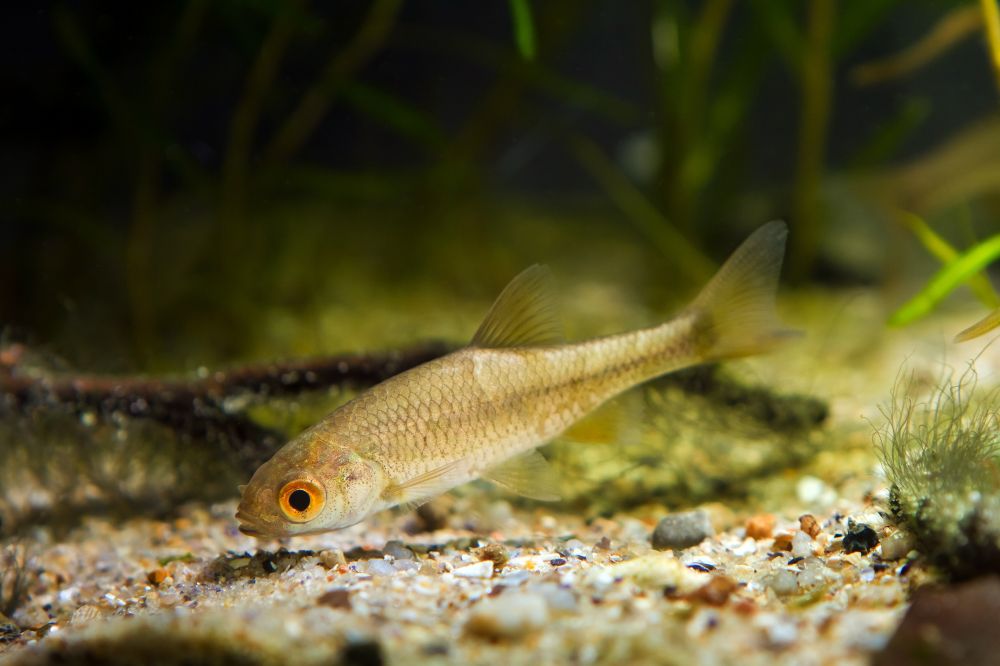
Read the article with FishingTheSpot: the sunbleak fish
Keep an eye on this subject!
Thousands of species spotlights and techniques but also all the local information about your city!



Meet other anglers near you and share your fishing fishing trips, afoot or on a boat, at sea or in freshwater
See the fishing tripsThe Sunbleak fish

From April to September in the white water and all
no restriction
Did you fish
this species this month?
The Sunbleak fish belongs to the Cyprinidae family. The usual size of sunbleak is 4 to 6 cm for a weight of about ten grams. The largest individuals can reach 9 cm. Its lifespan is about 2 years. It breeds between May and July. It is prohibited to fish for the sunbleak in white water from October to March, but in mixed and calm waters it can be fished all year round.
The Sunbleak has a tapered, laterally compressed body, like the common bleak with which it is often confused. However, its body is more robust and less high than that of the latter. Its head is small with eyes that are excessively large in relation to the size of the head. Its lower jaw is longer than its upper jaw, giving its mouth a forward and upward orientation, indicating a fish that feeds preferentially on the surface. The caudal fin of sunbleak is particularly indented, its dorsal fin fits well behind the pelvic fin insertions. The sunbleak has an olive-brown back, bluishly reflective sides and a silvery belly. Its fins are light grey.
The Sunbleak fish Lifestyle
The sunbleak feeds mainly on the surface on zooplankton, phytoplankton and flying insects. In winter, the sunbleak reaches deeper areas where he looks for food in the entire water column. The presence of sunbleak is often revealed by a multitude of uninterrupted gobages on the surface, similar to those caused by bleak.
The sunbleak breeds between May and July in shallower, warmer waters near the shores. The female attaches her eggs in rings or spirals to the stems of aquatic plants. Incubation lasts between 10 and 12 days. During this period, the males, which have become territorial, monitor the eggs, ensuring a permanent stream of fresh water on them.
The Sunbleak fish habitat
The Sunbleak is native to Central and Eastern Europe, its natural distribution area extending east of the Rhine. For several decades, this species has spread to Western and Northern Europe, thanks to man-made canals and also by its direct introduction into some ponds.
It is a very small fish capable of taking advantage of floods to colonize a new body of water and thus extend its natural range. It is a gregarious fish that lives in schools composed of a greater or lesser number of individuals. It is particularly fond of clear, well-oxygenated, shallow water bodies, ideally without current, or separated from the main current (dead branches of rivers, canals, ponds,...) where there is abundant vegetation.
The Sunbleak fish angling
Two fishing techniques are mainly used to catch sunbleak.
The first is to catch this fish on the surface using small insects or tiny live or artificial flies.
The second is a blow fishing in the upper part of the water column.
In cold, dark or winter weather, sunbleak moves away from the edges and surface and can descend to the bottom where it is caught with a roach line.


